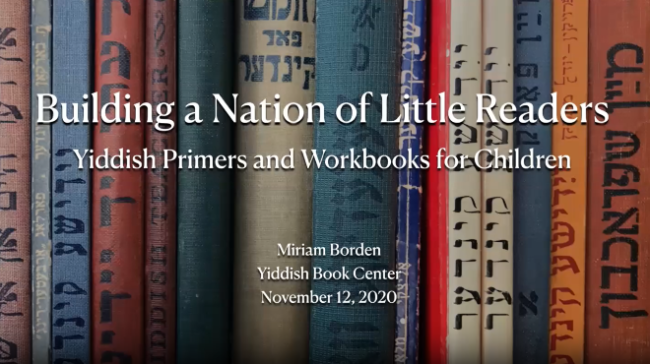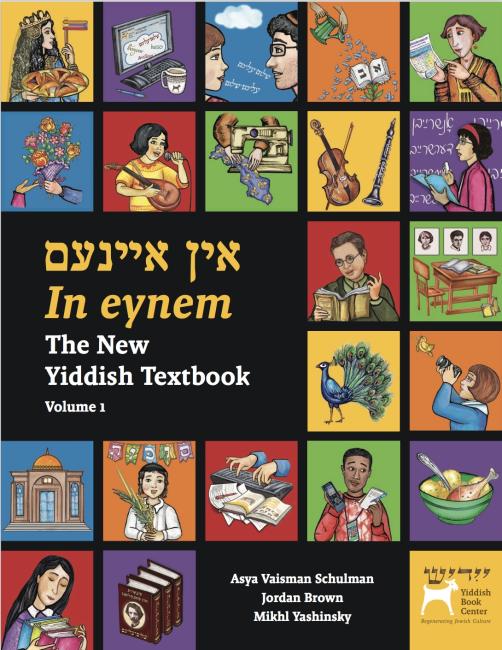Weekly Reader: Celebrating Yiddish Pedagogy
“Summertime / and the livin’ is easy.” So goes DuBose Heyward’s famous line from George Gershwin’s Porgy and Bess. For many of us that’s true—summer is a time to kick back, head to the beach, enjoy the outdoor weather, and take it easy. At the Yiddish Book Center, however, summer is our busiest season, because that’s when many of our education programs take place. There’s the Steiner Summer Yiddish Program, the Great Jewish Books programs for both high school students and educators, a new cohort of translators in our translation fellowship, and more. This week is also the anniversary of the founding of the Tsentrale Yidishe Shul-Organizatsye (Central Yiddish School Organization), or Tsysho, which was created in Warsaw on June 15, 1921. Our programs can hardly replace the network of secular Yiddish schools envisioned and organized by Tsysho, but it is an occasion to celebrate Yiddish pedagogy in all of its incarnations. Ever wonder what it means to go to school, in Yiddish? Read on.
—Ezra Glinter, Senior Staff Writer and Editor
School Days
The history of Tsysho, and its vision for a secular school system with instruction in Yiddish, is a story worth reading about. Hearing from the people who were actually a part of it is priceless. Fortunately, the Center’s Wexler Oral History Project was able to sit down and interview some of them. In this interview, Moshe Shklar, a Polish-born Yiddish poet, describes his memories of the country’s interwar Jewish educational system. The interview is in Polish, but this excerpt is subtitled in English.
In Memoriam
Like the rest of Polish Jewish culture, Tsysho and its network of schools were largely destroyed by the Holocaust. But that doesn’t mean they, or their teachers, were forgotten. In 1952 a special memorial book was published in New York, dedicated to the teachers of the Tsysho schools.
Read the Teachers Memorial Book in the Steven Spielberg Digital Yiddish Library
The Littlest Readers

Tsysho wasn’t the only source of Yiddish pedagogy in the pre- and postwar decades. The 1940s and ’50s were a golden age for Yiddish primers, workbooks, and educational material of all kinds. These books and notebooks have much to tell us, but so does what their users left behind: doodles, addresses, jokes, and other marginalia that provide glimpses into the inner world of schoolchildren. Miriam Borden is a collector of these archival objects, and she won the 2020 Honey & Wax Book Collecting Prize for her trove of schoolbooks, flashcards, and more. In this presentation, she shares highlights from her collection and the stories behind them.
Reading Rainbow
Looking for an accessible book to accompany your Yiddish learning journey? Look no further than these twelve fun lernbikher (learning books), which are all digitized and available for free through the Steven Spielberg Digital Yiddish Library. While some of these are explicitly language-learning books, others introduce students to the wide world of Yiddish literature and Jewish history.
Twenty-first Century Pedagogy

Innovations in Yiddish teaching didn’t stop after the Holocaust. In fact, the Yiddish Book Center recently published its own textbook, In eynem, which draws on contemporary techniques of language teaching to bring Yiddish instruction into the twenty-first century. In this presentation you can hear about the textbook’s unique approach from Asya Vaisman Schulman, director of the Center’s Yiddish Language Institute, along with the Center’s academic director, Mindl Cohen, co-authors Jordan Brown and Mikhl Yashinsky, and special guest Lorin Sklamberg, who brings to life some of the book’s most engaging and singable resources.
Watch a presentation about In eynem: The New Yiddish Textbook
School’s Out for Summer
Excitement for the warm days of summer as the school year drew to a close was often found in the last pages of Yiddish educational books. In this excerpt from the 1971 edition of Yidishe kinder alef—part of a series published by the Education Department of the Workers Circle—students Motele, Serele, and Berele discuss their plans for the summer and ask their teacher what he will do. What do you think his answer is?
